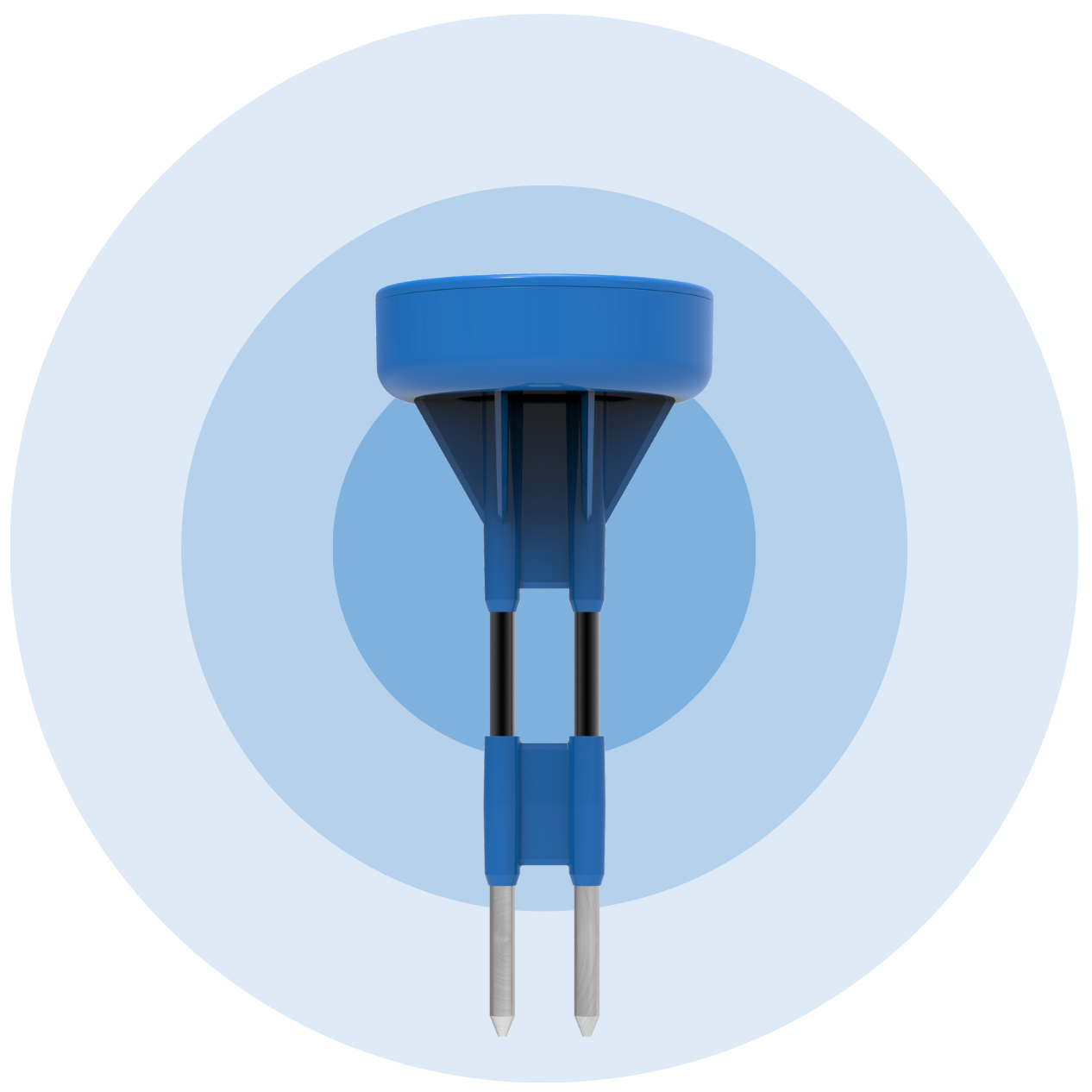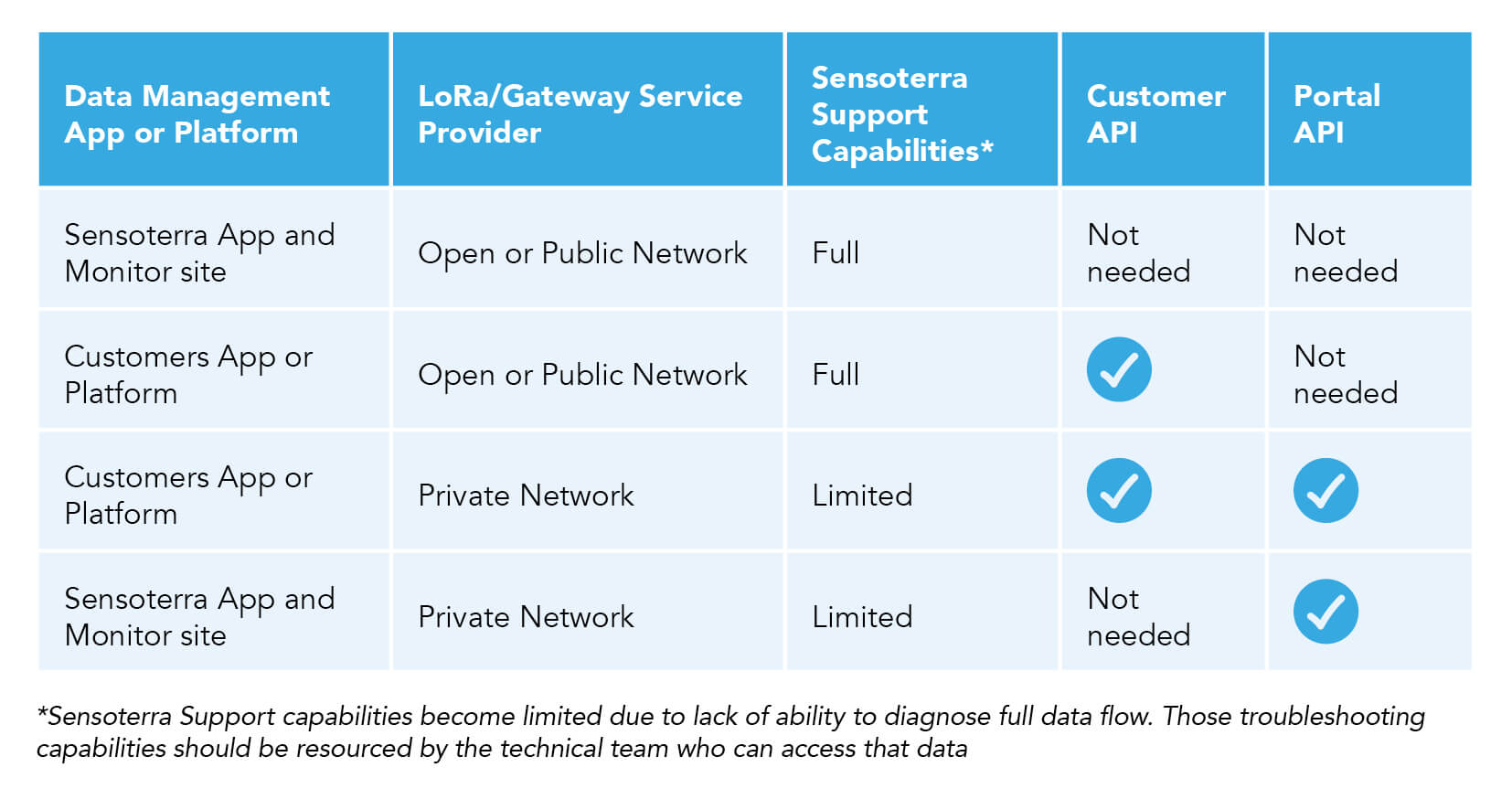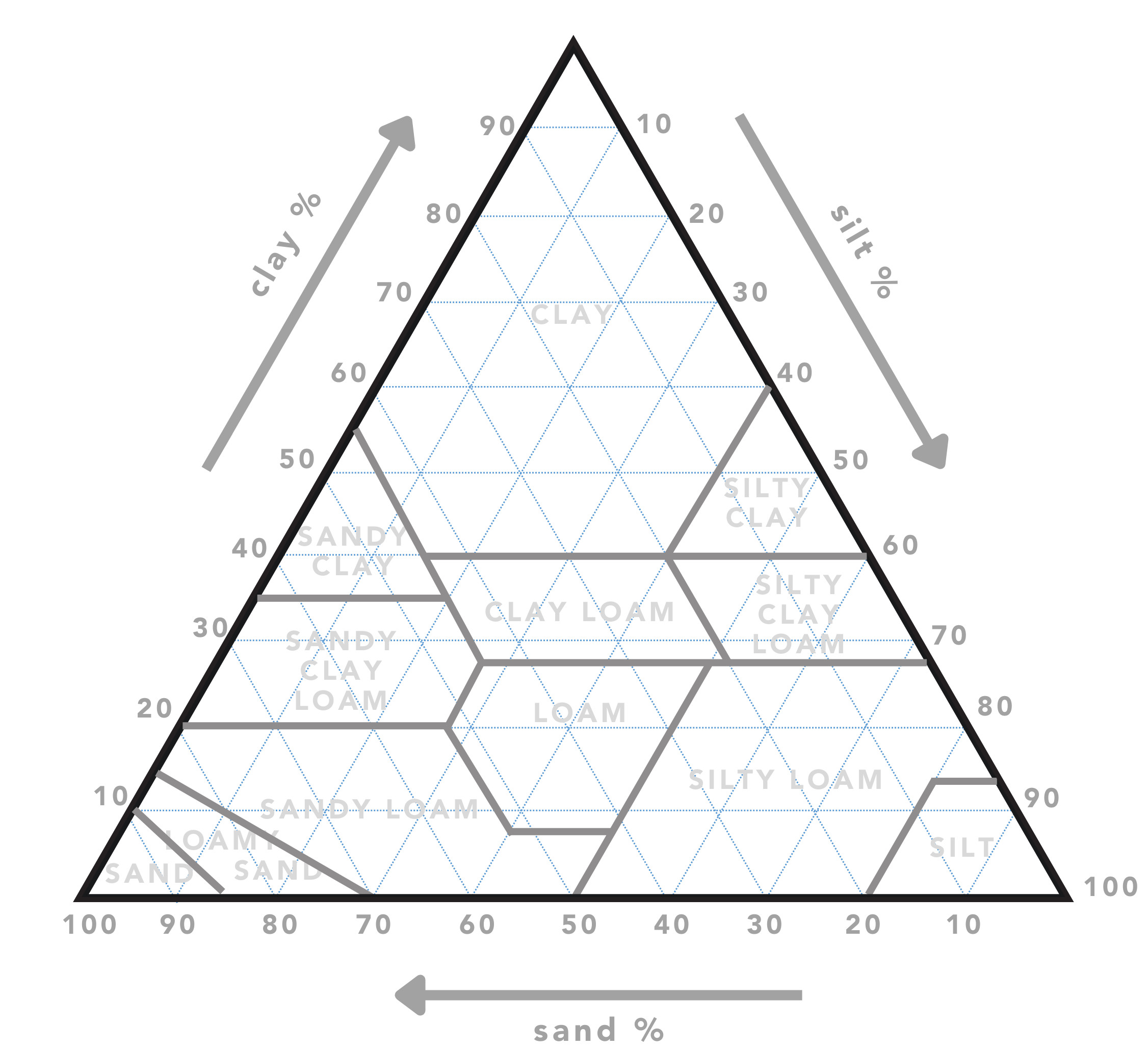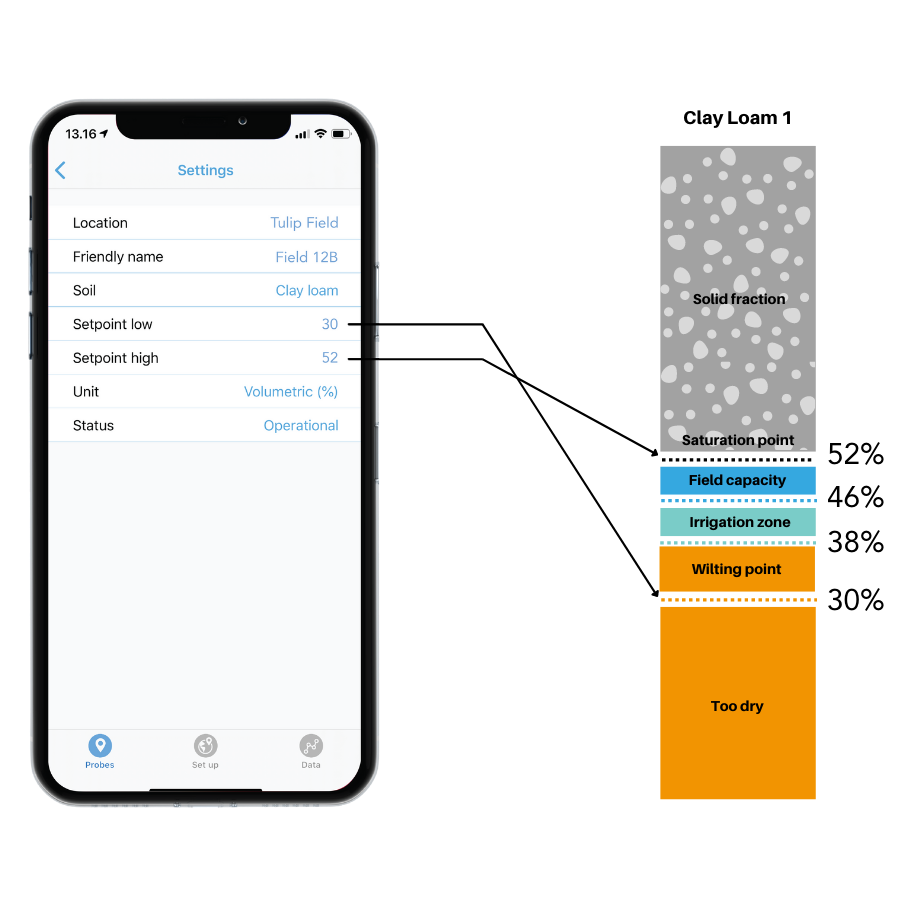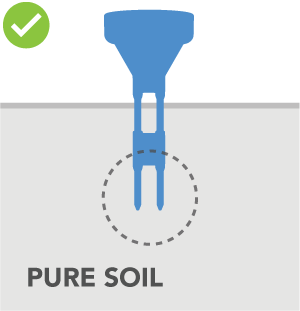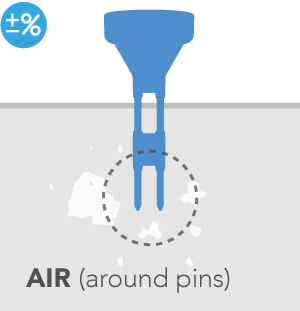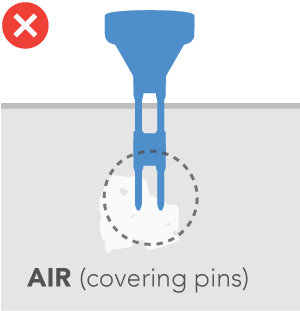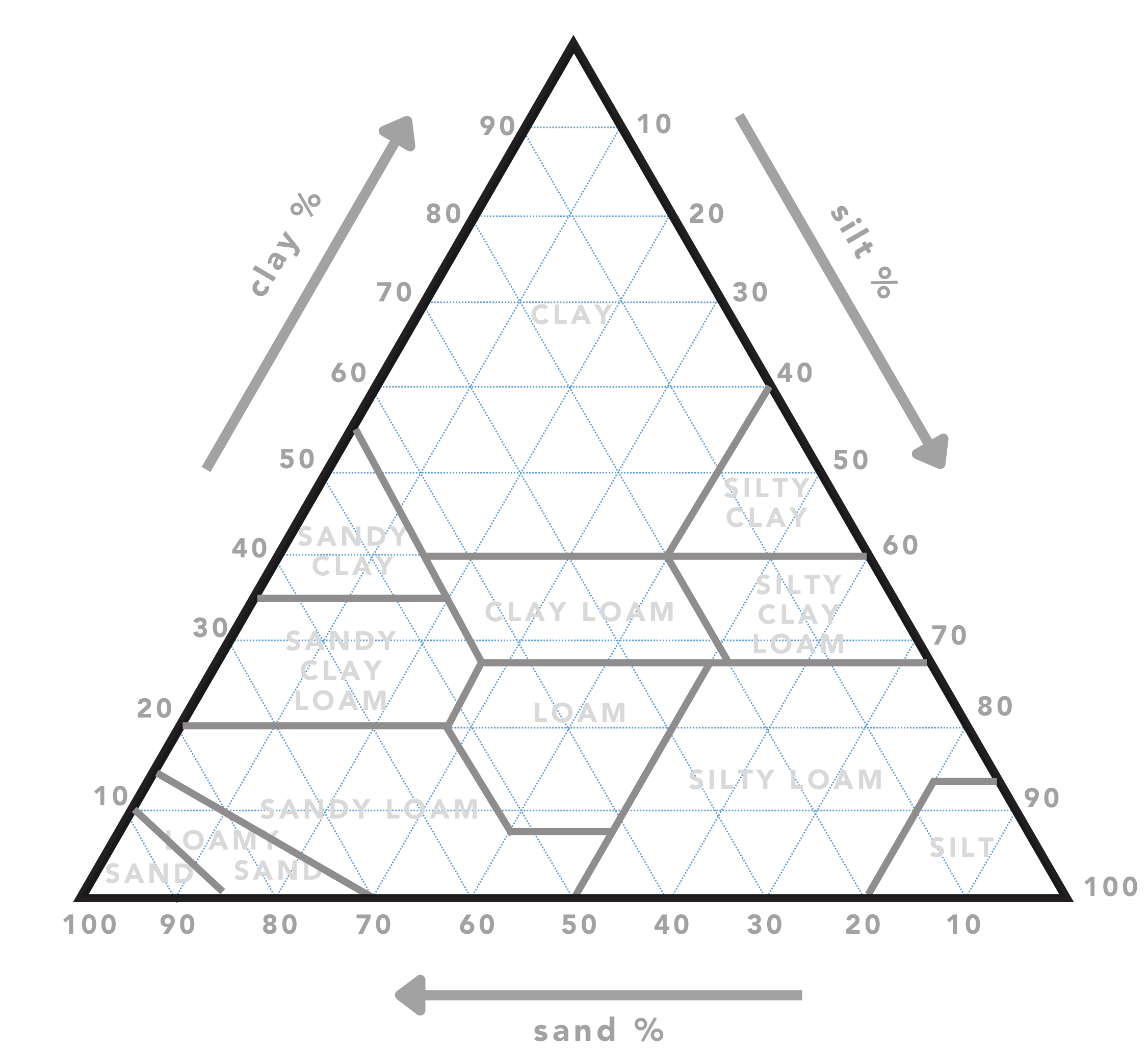Tips and tricks
Use a system of sensors
This is the best way for you to ensure reliability of the data coming out of your field. Use the average of the different measurements to get the best general overview of soil moisture in that field.
Good installation practice is key
If you encounter hard resistance when hammering the sensor into the ground, try moving the sensor to a new spot – even if it is only 10 cm away, it can make a big difference. Seeing how different the soil can be – even at small distances – also explains why the readings can vary slightly.
Ensure that your sensor has good contact with the soil. The sensor should be sturdy in the soil, not wiggling.
Use the right calibration for your soil
Using wrong calibrations for your soil, will likely offset the data, however you should still be able to see the overall trends.

